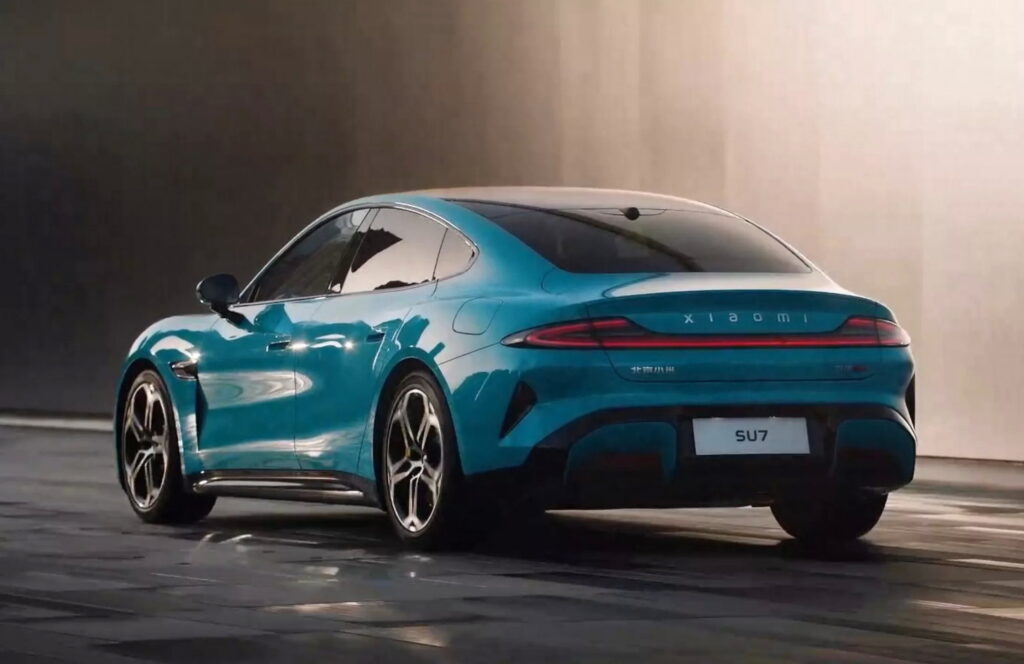Xiaomi learns that even successful launches can be difficult, as SU7 popularity leads to crashes, order backlogs, and refund regret
April 1, 2024 at 16:58
- Smartphone giant Xiaomi’s first car is a hit, literally and figuratively, as test drivers crash early examples of the car.
- The new electric sedan’s popularity means long wait times for buyers who want the SU7.
- Some of the people who ordered one may have accidentally voided their ability to get a refund on their deposit, after clicking the wrong button on the automaker’s website.
When Chinese smartphone manufacturer Xiaomi launched its first vehicle, the all-electric SU7, about a week ago, it sparked massive interest from local buyers. The sedan promises to offer technology and performance rivaling the best from Tesla and Porsche, all at a fraction of the price.
The days following the launch, however, have been far from smooth, with extended wait times for deliveries, accusations of failing to honor a money-back guarantee, and reports of several crashes tarnishing the otherwise popular debut of the EV.
More: Xiaomi SU7 Starts At $29,900 Undercutting Tesla Model 3 By $4,000
Despite a starting price of 215,900 yuan (around US$29,900 at current exchange rates), the base model SU7 offers more than 435 miles (700 km) of range and 295 hp (220 kW / 299 PS). That led the company to receive 50,000 orders within 27 minutes of the launch, and 88,898 orders within 24 hours.
That’s certainly an impressive feat, but the volume of orders is leading to some issues. Reuters reports that consumers will have to wait a long time to get their car. Those who ordered an SU7 Pro (which gets up to 516 miles / 830 km of range on the CLTC cycle) will have to wait 18 to 21 weeks (around four to five months) to get their vehicles.
Worse still, those who ordered the top of the range SU7 Max, which promises to deliver 497 miles (800 km) of range and 663 hp (495 kW / 673 PS), will have to wait as long as 30 weeks, or seven and a half months, to actually receive their vehicle.

For buyers who were turned off by the wait times, there could also be problems. Singtao reports that consumers who want to cancel their order are complaining that they are unable to get their deposits back.
Xiaomi promised that customers’ 5,000 yuan (around US$690) deposit could be refunded within seven days of a customer placing their order. However, some of the 469 customers who requested a refund say the policy is not being honored. Xiaomi seems to be suggesting that this could be down to user error.
The company clarified that customers could lock their orders in before the seven days had elapsed, which makes the order non-refundable. The company has now made it more difficult to lock in an order on its website, in an attempt to make it harder to do it accidentally.
The final difficulty that Xiaomi has had to deal with since launching the SU7 is the people driving it, reports Singtao and Car News China. Photos and videos of drivers losing control of demonstrator vehicles have started emerging on Chinese social media.
With the most powerful version of the car offering drivers 663 hp (495 kW / 673 PS) and instant electric torque, it perhaps shouldn’t come as a surprise that some of the people who are test-driving it are surprised by its get-up-and-go.
Some have questioned whether the speed with which evidence of the car crashing has emerged is a sign that its traction control system is underdeveloped. However, the plethora of Ford Mustang crash videos on the internet prove that new automakers aren’t the only ones who struggle with a reputation for crashing.
Photos Weibo/丢掉烦恼

ivermectin 6 mg pills – atacand 16mg generic carbamazepine pills
order accutane 20mg generic – zyvox pills linezolid tablet
order amoxicillin pill – amoxil cheap ipratropium 100 mcg tablet
order azithromycin 250mg pills – azithromycin for sale online nebivolol pill
prednisolone usa – prednisolone 20mg usa prometrium without prescription
buy gabapentin pill – gabapentin 600mg tablet order itraconazole pill
buy generic furosemide for sale – oral piracetam 800 mg order betnovate online cheap
how to get doxycycline without a prescription – buy cheap generic ventolin buy glipizide 5mg without prescription
augmentin medication – augmentin over the counter buy duloxetine pills for sale
augmentin online buy – duloxetine over the counter duloxetine uk
buy zanaflex online – order microzide pills buy hydrochlorothiazide 25 mg without prescription
sildenafil overnight delivery – generic sildenafil cialis 10mg us
buy tadalafil sale – cialis 10mg drug sildenafil 50mg tablet
buy cenforce generic – cenforce over the counter buy glucophage medication
atorvastatin 40mg pills – buy lisinopril 5mg sale lisinopril 10mg us
medrol 4mg online – methylprednisolone 4 mg for sale aristocort 4mg uk
clarinex 5mg without prescription – buy generic priligy buy dapoxetine 60mg for sale
buy misoprostol 200mcg without prescription – cost xenical 60mg diltiazem 180mg pills
domperidone for sale online – motilium us buy flexeril pills